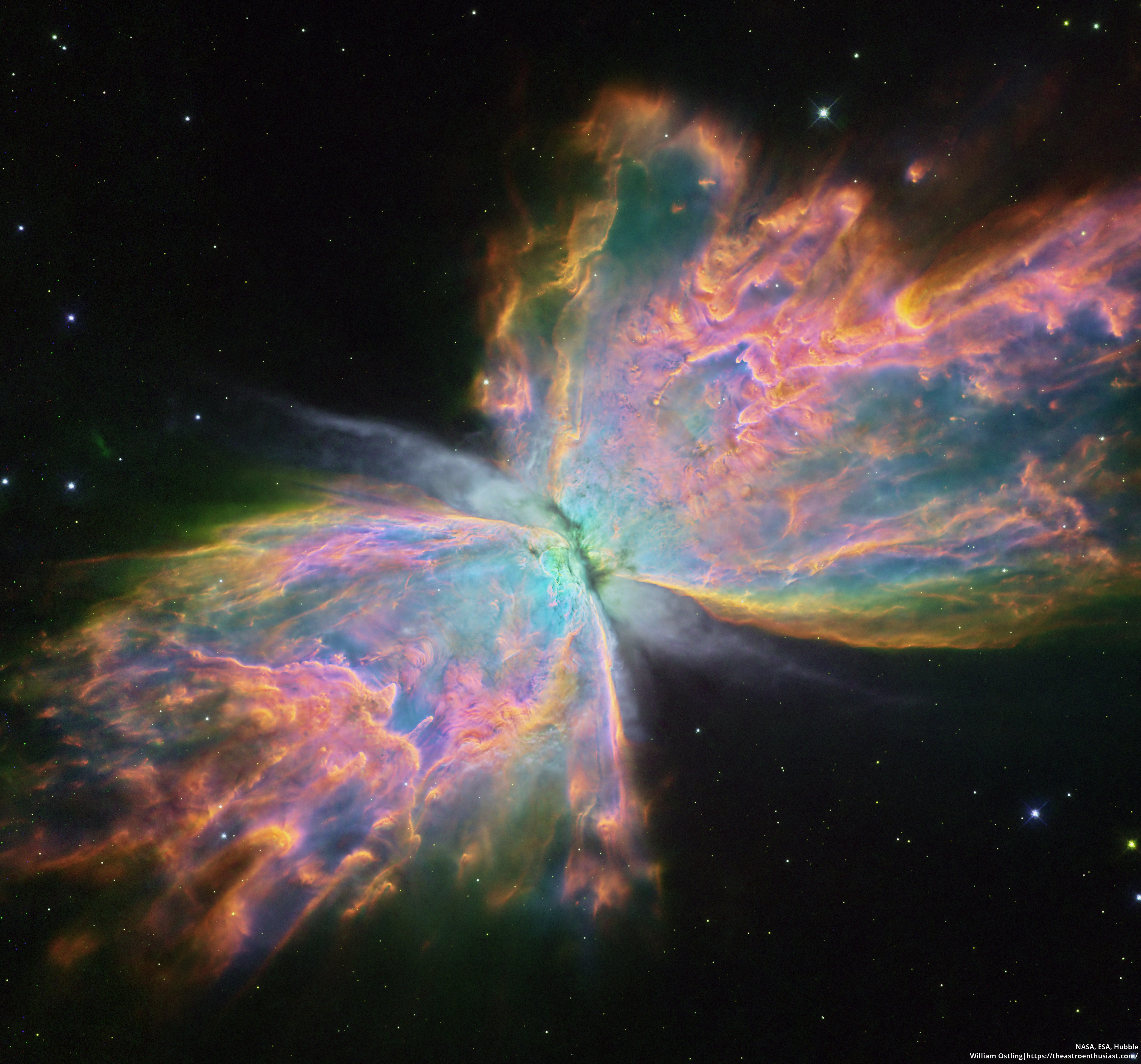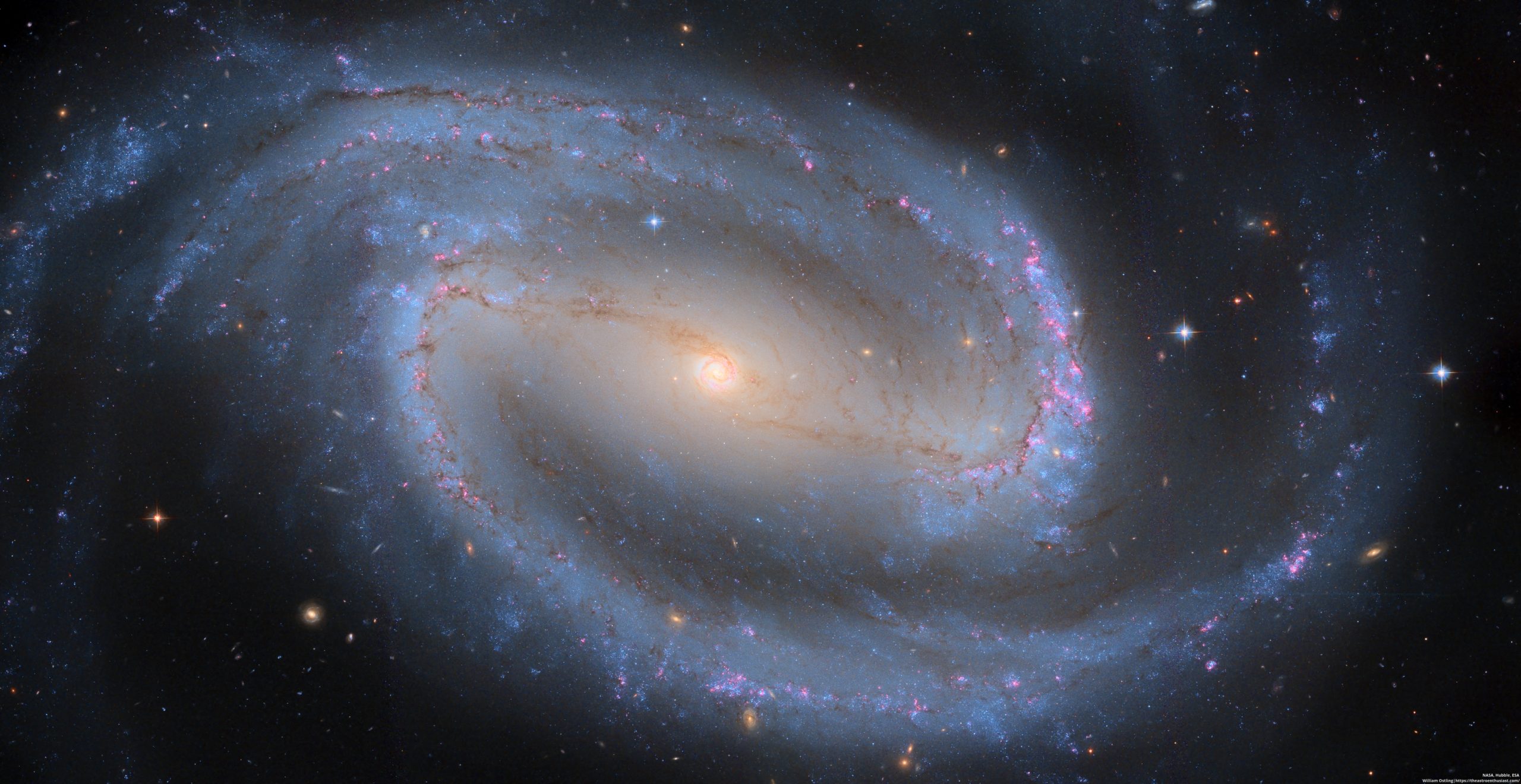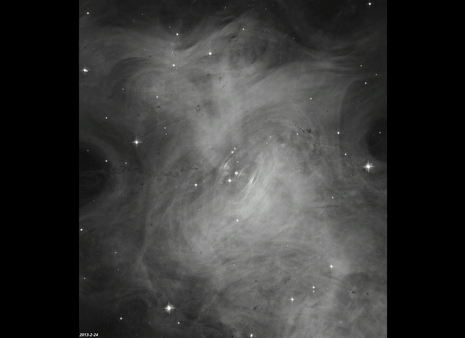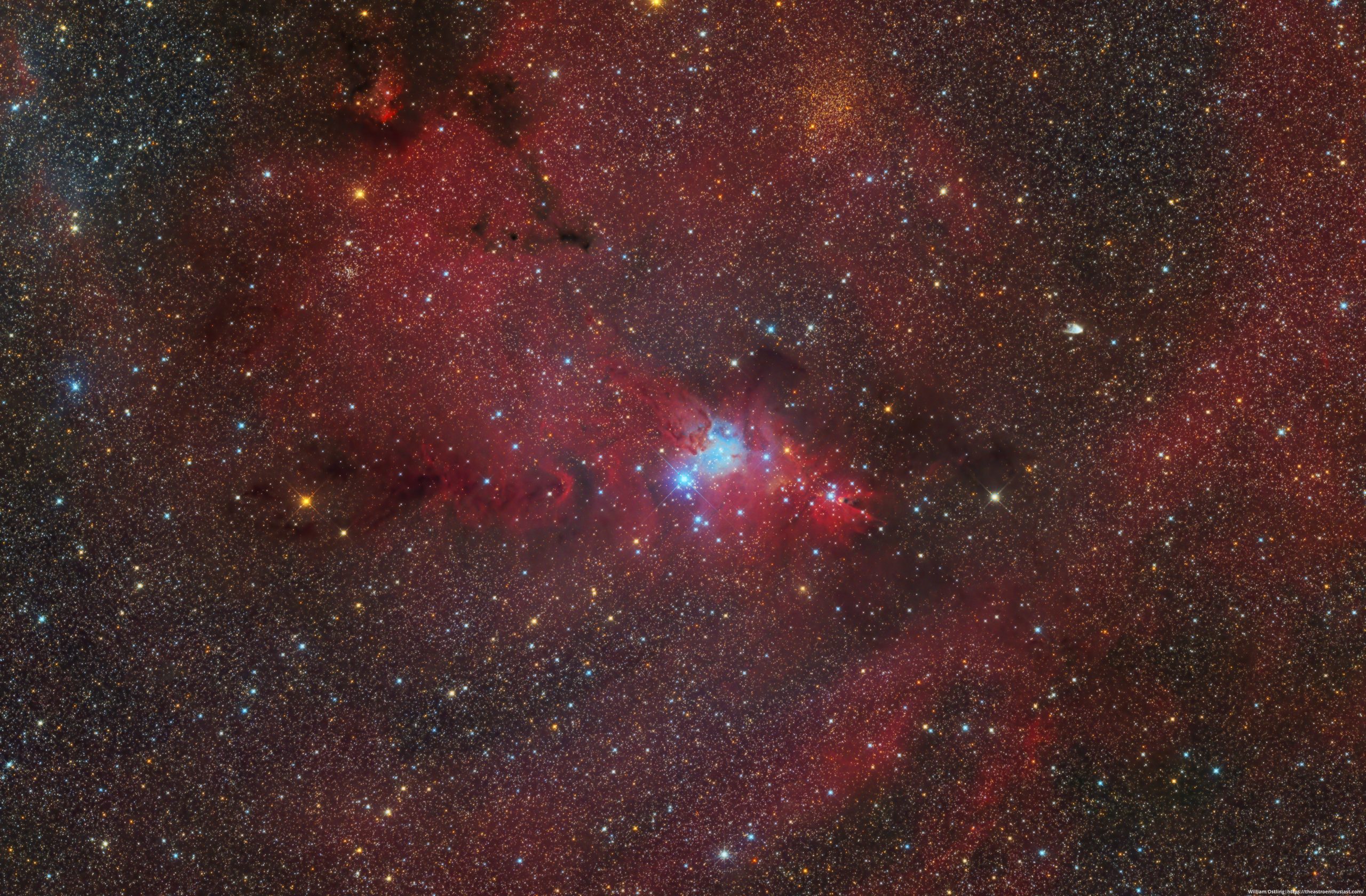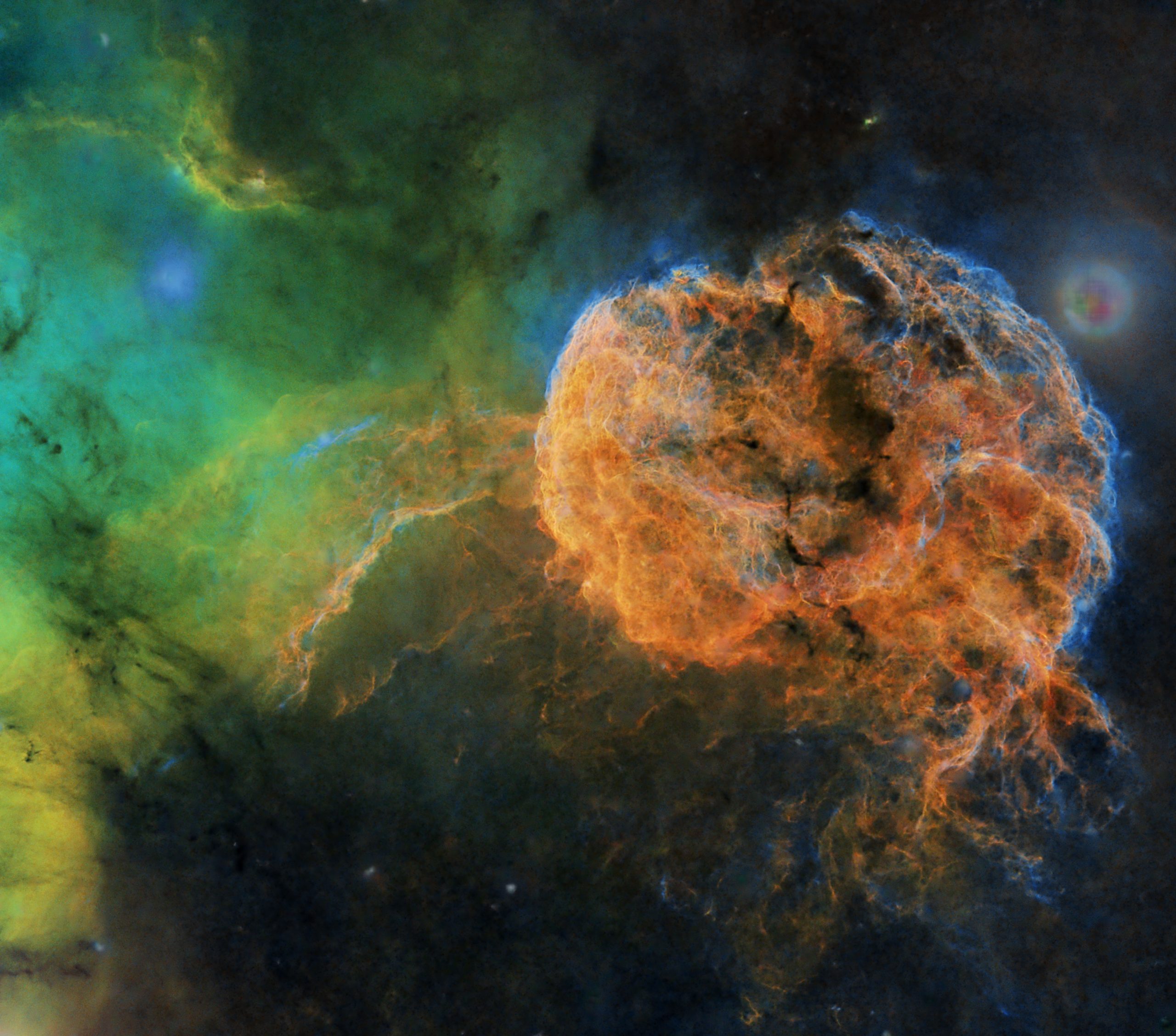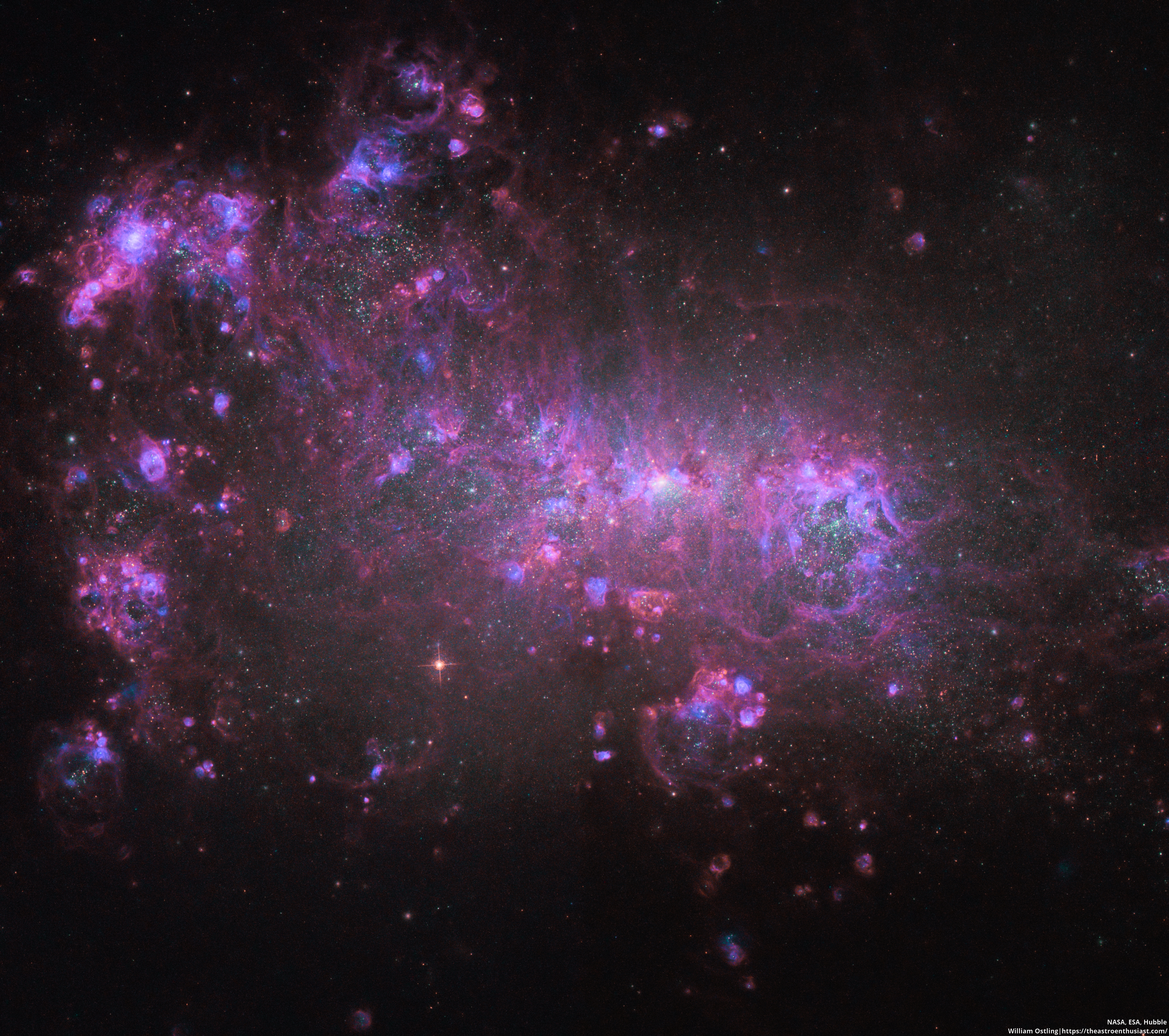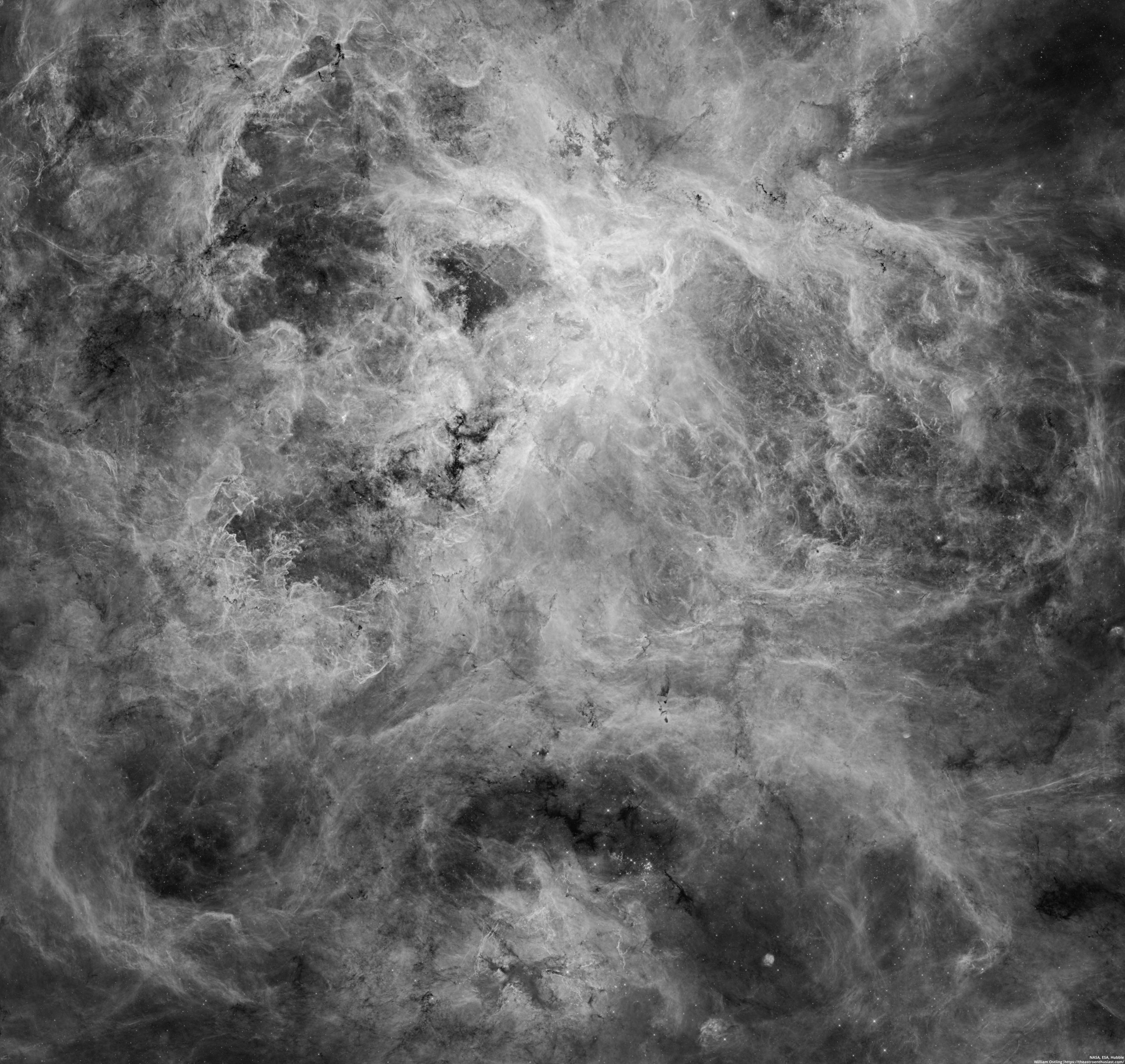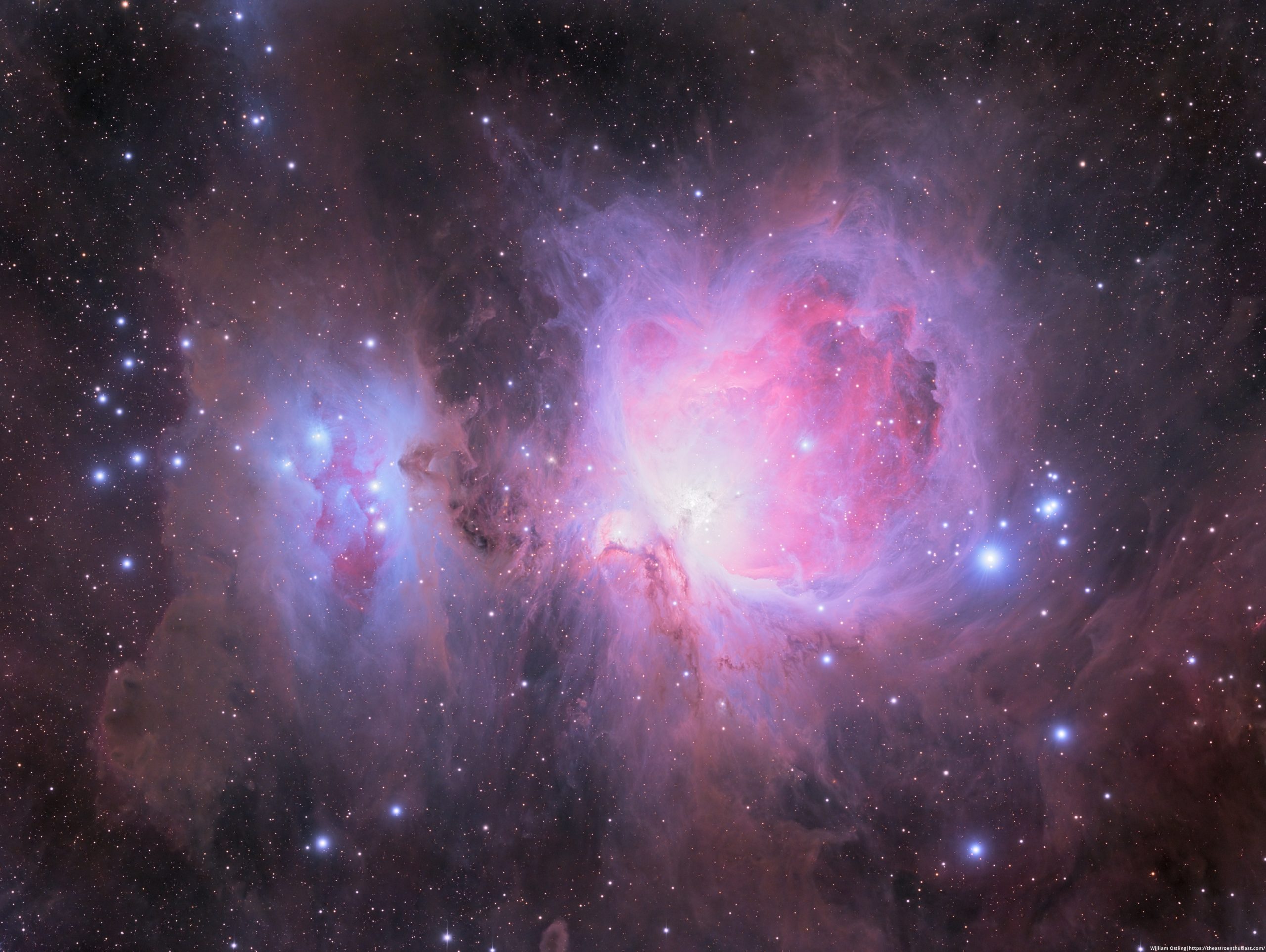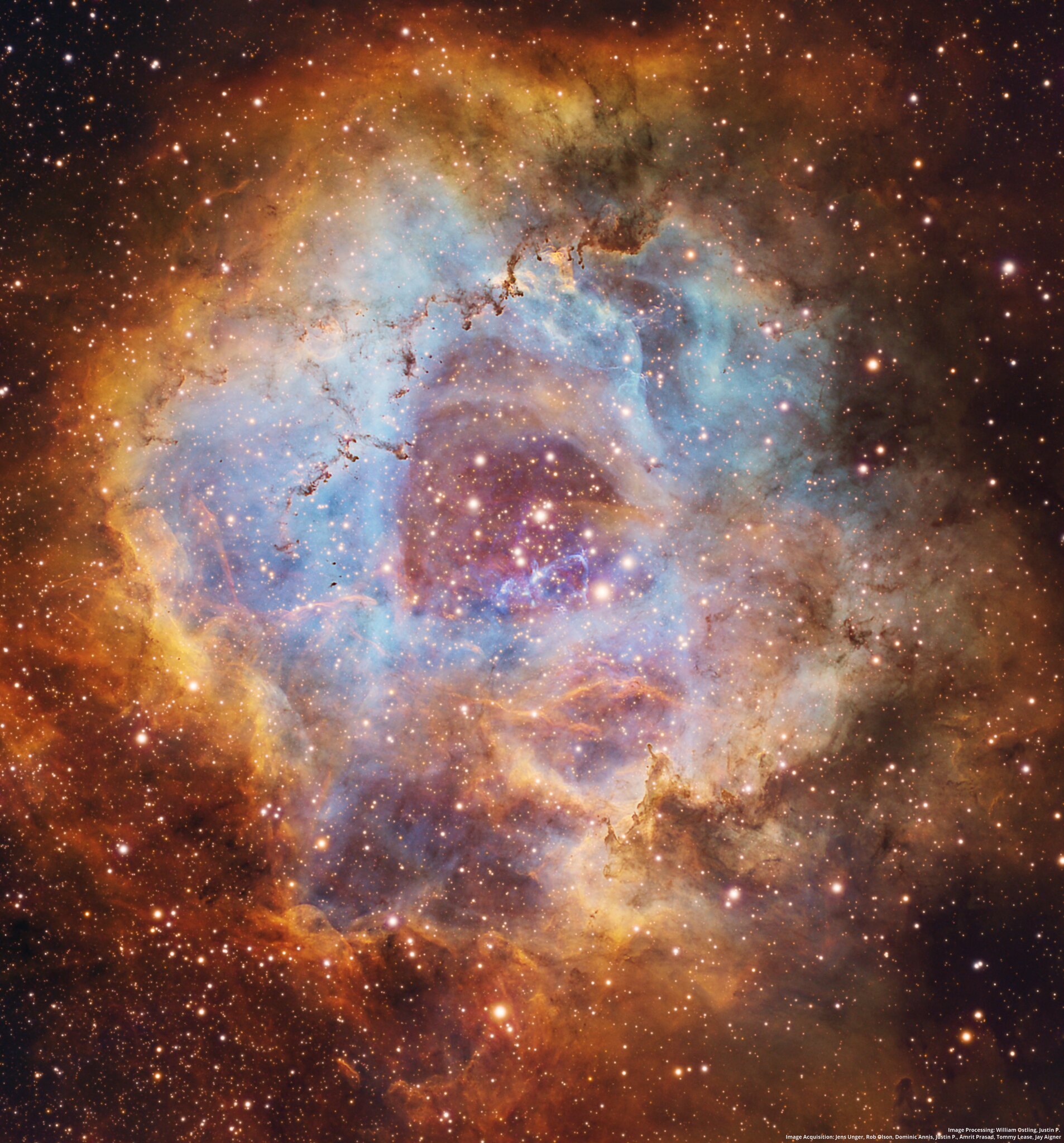Hypersonic superheated rainbow outflows from a dying star – NGC 6302 from Hubble
This image was featured as NASA’s astronomy picture of the day on 11/21/2022: https://apod.nasa.gov/apod/ap221121.html The spectacular planetary nebula NGC 6302 lies roughly 3,800 light-years away in the constellation Scorpius. More popularly known as the Bug Nebula or the Butterfly Nebula, this celestial object looks like a delicate butterfly. But what resemble dainty wings are actually roiling regions of gas heated to more than 36,000 degrees Fahrenheit. The gas is tearing across space at more than 600,000 miles an hour — fast enough to travel from Earth to […]
Read more